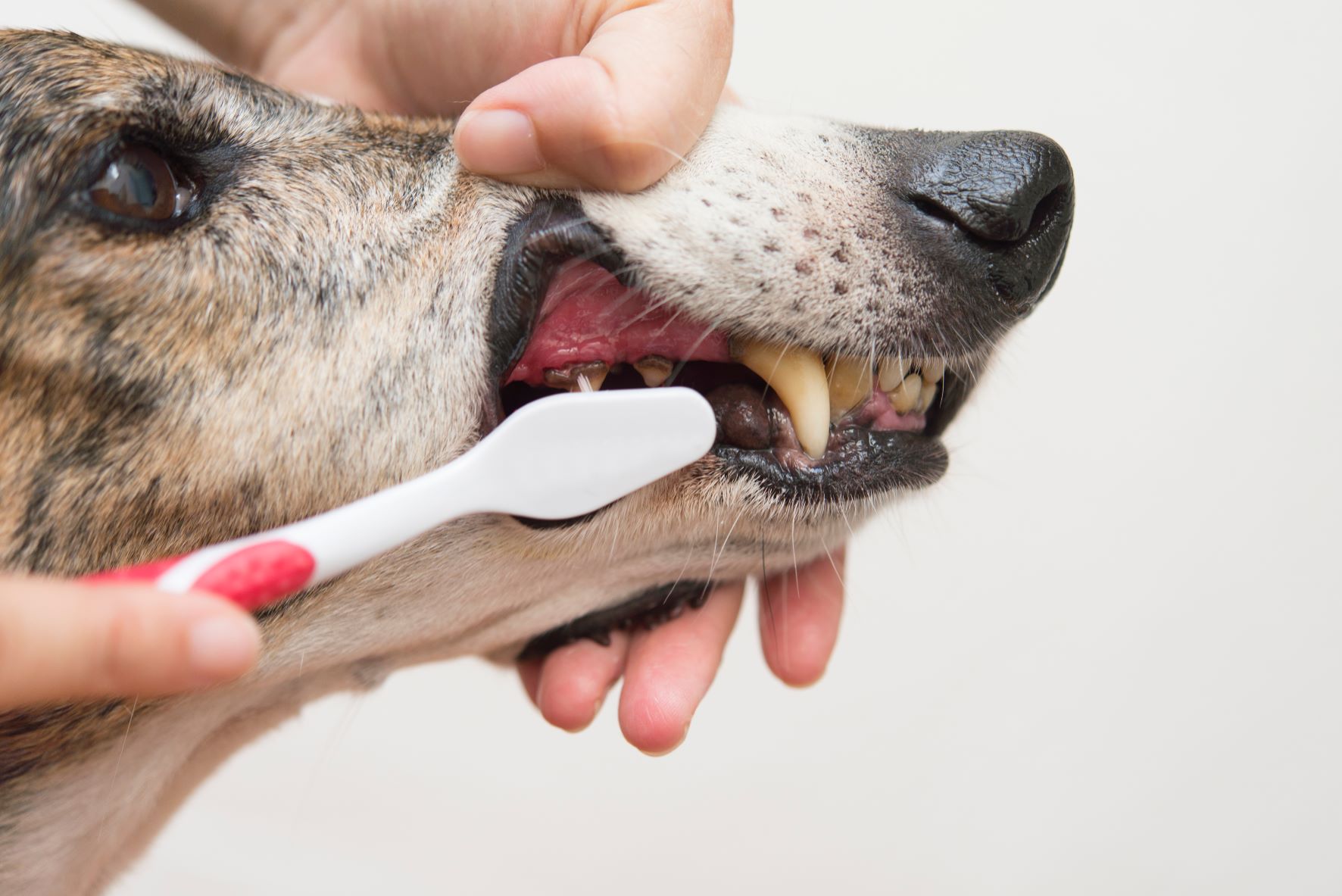Dental Health
 | Periodontal disease, also known as tooth and gum disease, is very common in dogs and is often under-diagnosed. Up to 80% of dogs over three years old have some form of periodontitis. |
Causes of Periodontitis
Periodontitis can be caused by poor diet and a lack of dental care which leads to a build-up of plaque. The disease starts with bacteria in the mouth which sticks to the teeth in a substance called plaque. The longer plaque stays on the teeth, the more that it accumulates and hardens with minerals to form calculus or tartar. This occurs after 3 days of build-up.
The build-up of calculus on the teeth can only be seen when it is above the gums. Calculus above the gums can occur with or without periodontitis. The bacteria in calculus irritates the gums and causes inflammation, which allows these bacteria to move under the gums. Plaque then forms pockets under the gums along the root of the tooth. This is when periodontitis sets in.
The closer the bacteria gets to the bone of the tooth socket, the deeper the inflammation develops and bone loss around the tooth starts to occur. The bacteria release toxins and these can travel in the bloodstream to the liver, kidneys, lungs and heart muscle and cause disease in these organs as well.
Greyhounds can have a genetic predisposition to periodontitis. This means that in some genetic lines, the greyhound’s own immune system does not cope well with gum disease and extra inflammation adds to the pain and swelling associated with periodontitis. These dogs have very painful mouths, swollen gums and lips. In some severe cases, extracting all the teeth is the only way to permanently cure this condition.
Identifying PeriodontitisThe first stage is what we see as gum disease or gingivitis. This is redness and swelling of the gums, they may bleed more easily and often the dog has smelly breath. This stage is reversible with treatment. The second stage is tooth disease or periodontitis which is inflammation of the deeper structures of the teeth and jaw bones. The damage caused by periodontitis is irreversible. Dogs with normal looking gums may still have some level of deeper periodontitis. It can only be diagnosed by a vet using dental instruments and dental x-rays during general anaesthetic. The disease can be difficult to identify as there are very few outwards signs that can be seen, unless excessive calculus is present. It is wise to seek veterinary advice if a greyhound has smelly breath, red, swollen or bleeding gums, or excessive calculus. |  |
Tips for preventing Periodontitis
1. Regular home dental care including daily brushing, the use of dental rinses and dental chews. Ask your vet for further advice
2. Include raw meaty bones in the greyhound’s diet a few times a week
3. A greyhound’s annual veterinary health check should include a thorough dental examination
